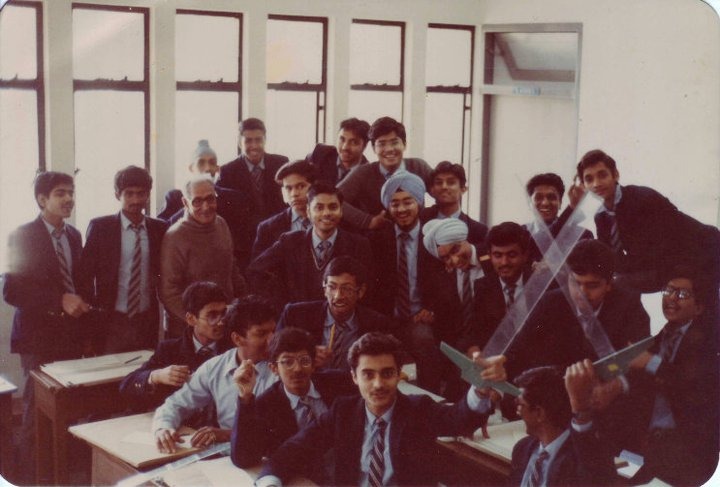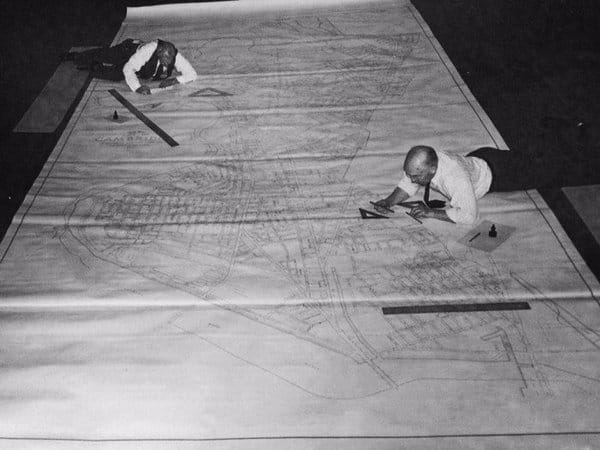UPDATE: The class mentioned below is spread around the world yet active on Whatsapp. Of course, my classmate would share a photograph so the post is updated with that memory below. Thanks, Manish!
Mechanical Drawing was an elective (to Biology) to science-track students at Mt. St. Mary’s School in Delhi Cantt, India. Given its proximity to the newly established computer lab, I picked it without a second thought. Mr. Singh, aging, angry, and opinionated led the class at stark contrast to Mrs. Suri’s empathetic biology.
Students, in Catholic school-standard, pressed attire and look arrived at Mr. Singh’s afternoon class with sleeves rolled up, hair unkempt, shirts un-tucked and with abandon representative of many high school boys. We’d roll out our drafting paper (36×24 inches of bleached white) onto the drafting tables, unpack the perfectly sharpened pencils, the washed erasers (later), and spotless T-squares, compasses and more.

Mr. Singh’s challenge of the day – a gear, a machine, a part or an object lay in front on a table. The routine task – draw a top, side and front view of the part to scale, minimize erasure, view the object in three dimensions of your mind, rotate without touching, imagine with eyes closed. He wanted us to feel the object before letting lead touch paper. And commit the design to paper with the professionalism he attributed to ‘real’ engineers and architects.

Each touch of the eraser docked points – as we obviously hadn’t planned the baby step toward the final goal. And if the eraser left a tell-tale smudge, more points vanished into the ether. We tried to avoid the smudges by washing the erasers with soap religiously before class and often succeeded. And the products, as they improved over time, showed why imagining, planning and visualizing mattered.
He was verbally abusive. Curses and language inappropriate for an Irish-Catholic school were often lobbed in Hindi and Punjabi. Our inability to ever score about 70/100 was his common refrain. Yet, he taught patience and professional conduct through this process. He’s been long gone (I am sure – that class was 34 years ago and he was no spring chicken then), and I’d largely forgotten about him until a friend’s post contrasting drafting of the past with CAD today presented this photograph. And it all came rushing back.

Mr. Singh shared the floor (an attic space above the auditorium really) with the computer lab filled with a few Commodore 64 and Sinclair ZX Spectrum computers. My current vocation clearly demonstrates where I spent my mind and body – sneaking away from his gaze into the lab to learn BASIC or mess with the machine. He could’ve never imagined those toys next door to his classroom would soon challenge his very admonishments. That cut/paste would render exact placement on the single sheet of paper irrelevant. Clone/heal would replace the messy erasers. Vast blocks of work as in the image above would instead be replaced by virtual desktops, tabs, and hyperlinked sheets.
I think about the above world in contrast to the agile approach to various forms of engineering. The visualization, imagination and perfect execution may not be visible in their recent form anymore but are we drawing the gears, the rivets, the angles, and connectors at such a detailed granularity now that we can make them turn individually before the entire part is set to motion.
Is erasing a smudge really all that bad on the way to perfection? Or can you hone your skill toward perfection by persistently working to avoid the smudges and erasures?